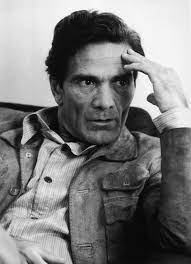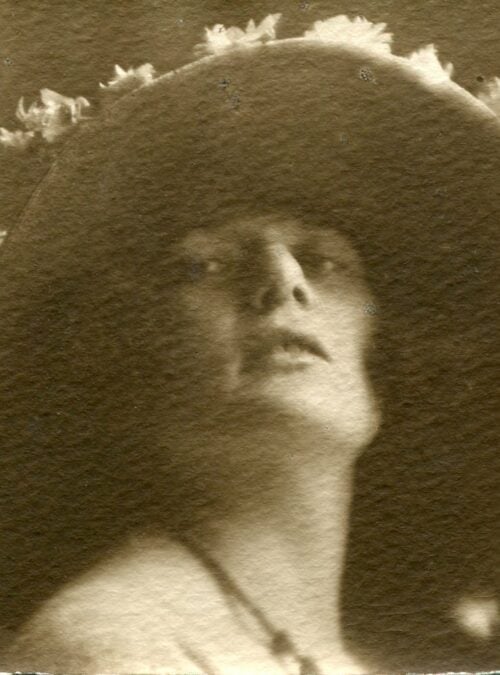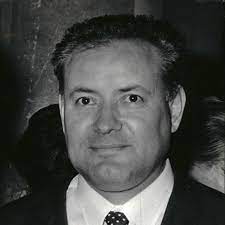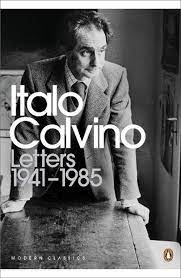Pier Paolo Pasolini in other languages – Part Two
Author: Martine Van Geertruijden, 'La Sapienza' University, Rome

Martine Van Geertruijden‘s journey into the vast universe of Pier Paolo Pasolini‘s translations continues and goes further into the Portuguese-speaking world (Portugal, Brazil), Eastern Europe and Russia, and then dwells in the Anglo-Saxon world, between Great Britain and, above all, the United States, where there have been many translations, especially of his poetic work.
Spain is certainly not the only country where political censorship affects Pasolini’s work. If Salazarist Portugal welcomed the director of Evangelho segundo São Mateus with open arms in the mid-1960s, and from then on his major works were translated more or less regularly, in Brazil, where he conquered the general public with Teorema (1969, Fernando Travassos), the scandalous force of the film made him a cursed author in the Catholic, conservative context of Brazil’s military dictatorship, and his works were censored until the mid-1980s. However, as with Spain, Pasolini’s presence in the Lusophone area remains significant in magazines and periodicals. From 1984 onwards, numerous translations are published, starting with Amado miu, Meninos da vida and an anthology of Escritos Póstumos. As for Pasolini’s poetic work, the editions in circulation are mostly those translated for Portugal, in particular Poemas, the anthology curated by Maria Jorge Vilar de Figueiredo, first published in 1970.
In Eastern countries, Pasolini’s work meets a similar fate, though through a slightly different path. Hungary constitutes an extreme case, where Pasolini, held in high regard by a very small circle, remained semi-clandestine until the fall of the Wall. But after 1989, he fell victim to yet another form of censorship, this time unofficial and based on the rejection of all the Communist past, which classified him as komcsi (‘communist bastard’). It was only in the 2000s that he found a Hungarian voice, thanks to a collection entirely dedicated to him by the publisher Kalligram, which made his novels The Ragazzi, A Violent Life, Amado mio and Petrolio, as well as La religione del mio tempo and Heretical Empiricism known to the public. This publishing development testifies to the growing interest in Pasolini in recent years in many countries. In Romania, to mention yet another example, after Teorema and Scritti corsari translated in 2006 and The Ragazzi in 2019, two anthologies pay homage to him in his centennial: one dedicated to his essays, Scrieri Despre Literatură Și Artă, the other to his poetic work, Poezii.
Pasolini’s Czech fortune follows a different sequence of events. Until the Prague Spring, although he continued to be seen as a highbrow author, his critique of bourgeois culture awakened a certain amount of interest, mainly directed at his film production (in 1962, Accattone won the Karlovy Vary International Film Festival), but also at his poetic work: Gramsciho popel (Vladimír Mikeš, 1963) is the very first translation of Le ceneri di Gramsci. But after the publication of A Violent Life in 1965, he was banned by the regime due to his homosexuality. Only the social realism of The Ragazzi allowed him to be translated again in 1975. After 1989, however, publishing choices seemed to be dictated more by the commercial domino effect of the scandalous success of his films, and his writings were rarely translated, except for Amado mio (1999) and a collection of essays (Zuřivý vzdor, 2011).
As for the USSR, Pasolini entered the country most notably as a poet after a trip there in 1957 which had brought him into contact with the Russian intelligentsia (from which La religione del mio tempo later came to life). Throughout the 1960s, several of his poems, starting with Ballata intellettuale per Titov in 1962, appeared in Russian magazines or anthologies of Italian poetry. After a long interlude due to his stance against the Soviet lagers, Izbrannoe (‘Selected Works’, taken from major poetic collections) came out in 1984, and a thick volume entitled Teorema (‘Theorem’) in 2000, which contains both poems and scholarly writings on literary criticism and politics, some screenplays, and a few excerpts from The Ragazzi and Petrolio. It was only in 2006 that the first translation of a narrative text, Likhiye rebyata (The Ragazzi), was finally published, while various Russian poets continue to offer numerous translations of his poems (Kirill Medvedev, Alekej Tkacenko-Gastev). In a literary portrait of Pasolini, Eduard Limonov accurately explains this Russian predilection for Pasolini as a poet, and as a filmmaker: ‘His apparent contradictory nature binds him in an almost natural way to a culture and a literature based on paradox, both ideological and existential […]. But what makes Pasolini a ‘Russian’ author is also a civil commitment intended as the poet’s first mission, a love for the Past, his study and research on language and languages (…). One could therefore say that Russia and Pasolini mirror each other…‘ (translated by F. Tuscano).
Finally, it may be interesting to note that, in most countries where Pasolini’s work was subjected to of a form of political censorship, once democracy is restored his work begins to circulate once again, but constrained by a new mercantilist mindset, becoming in short, a ‘product’ to be sold, which ‘scandalous’ aspect is highlighted to make it more ‘appealing’, particularly for his films.
At the antipodes of the Russian predilection for the figure of the poet, we find Anglo-Saxon countries. In 2015, a large anthology of Pasolini’s work was published in the United States, which back cover reads, ‘Most people outside Italy know Pier Paolo Pasolini for his films […] What many do not know is that he was above all a poet […] For the first time, English speakers will now be able to discover the many facets of this singular poet […]‘. In The Selected Poetry of Pier Paolo Pasolini, curator and translator Stephen Sartarelli has in fact included poems from every period of Pasolini’s poetic oeuvre, showing “how central poetry was to Pasolini, independent of anything else he did in his creative life, and how poetry informed all his work, from the visual arts, to political essays, to films...”. Before this, as in other countries, it was Pasolini the filmmaker that took centre stage, followed shortly after by his novel production. In 1968, The Ragazzi (Emile Capouya) was released simultaneously in the US (and later released in England in 1986) and William Weaver’s English translation, A Violent Life. In England, David Price then translated The Scent of India (1984), Stuart Hood A dreaming of something (1988) and Theorem (1992). Meanwhile, in the US Thomas Erling Peterson published his translation of The Divine Mimesis in 1980; five short stories from Ali with Blue Eyes, Roman Nights and Other Stories (translated by John Shepley) came out in 1986, Petrolio, translated by Ann Goldstein in 1997, and Stories from the City of God. Sketches and Chronicles of Rome 1950-1966 in 2003, translated by Marina Harss. The English-speaking reader thus has much of Pasolini’s prose production at his disposal. In 1988, again in the US, Ben Lawton and Louise Barnet’s Heretical Empiricism marked a first step in the dissemination of the essays, while Stuart Hood’s publication in Great Britain of The Letters in 1992 uncovered his correspondence.
As for poetry, we have to wait until the 1980s to witness the first publishing steps (all in America), with Norman MacAfee’s anthology (1982) Pier Paolo Pasolini Poems, which includes a selection of poems from the main collections, and Roman Poems (1986), a selection of poetic texts by Lawrence Ferlinghetti published by his publishing house, City Lights, known for its catalogue of “committed” literature. Also from City Lights, in 2010 we see In Danger. A Pasolini Anthology, edited by Jack Hirschman, a poet and intellectual also known for his political commitment, which finally puts the critical and polemicist Pasolini on the same level as the filmmaker, poet and narrator. 1996 also saw the publication of A Desperate Vitality, a translation by the poet Pasquale Verdicchio of Poésies 1953-64, an anthology edited in 1972 by the French translator José Guidi, in agreement with the author, to “retrace as completely as possible a tormented ideological and poetic itinerary” (the same anthology was republished in 2020 in a bilingual edition entitled Une vitalité désespérée. Anthologie personnelle 1953-1964).
As we can see, also thanks to the help of Barth David Schwartz’s biography, Pasolini Requiem (Pantheon, 2017), between the United States and England, English is certainly, along with French, the language in which it is easiest to read Pasolini’s work.










